Windows Be-on-Guard Edition
Posted: May 12, 2012
Threat Metric
The following fields listed on the Threat Meter containing a specific value, are explained in detail below:
Threat Level: The threat level scale goes from 1 to 10 where 10 is the highest level of severity and 1 is the lowest level of severity. Each specific level is relative to the threat's consistent assessed behaviors collected from SpyHunter's risk assessment model.
Detection Count: The collective number of confirmed and suspected cases of a particular malware threat. The detection count is calculated from infected PCs retrieved from diagnostic and scan log reports generated by SpyHunter.
Volume Count: Similar to the detection count, the Volume Count is specifically based on the number of confirmed and suspected threats infecting systems on a daily basis. High volume counts usually represent a popular threat but may or may not have infected a large number of systems. High detection count threats could lay dormant and have a low volume count. Criteria for Volume Count is relative to a daily detection count.
Trend Path: The Trend Path, utilizing an up arrow, down arrow or equal symbol, represents the level of recent movement of a particular threat. Up arrows represent an increase, down arrows represent a decline and the equal symbol represent no change to a threat's recent movement.
% Impact (Last 7 Days): This demonstrates a 7-day period change in the frequency of a malware threat infecting PCs. The percentage impact correlates directly to the current Trend Path to determine a rise or decline in the percentage.
| Threat Level: | 1/10 |
|---|---|
| Infected PCs: | 79 |
| First Seen: | May 12, 2012 |
|---|---|
| Last Seen: | January 13, 2023 |
| OS(es) Affected: | Windows |
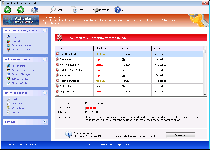 Windows Be-on-Guard Edition isn't the first example of rogue anti-malware software with an ironic name, and it's likely to be far from the last. As a scamware product that specializes in showing off completely inaccurate scanner results and live system alerts about imaginary attacks, Windows Be-on-Guard Edition doesn't have any ability to protect your computer and should never be purchased or registered for a fee. Windows Be-on-Guard Edition's many variants of its fake security pop-ups can include warnings about nonexistent infections, direct attacks or attempts to compromise your PC (such as stealing identity-related information) or even mere prompts to update outdated security software. However, SpywareRemove.com malware researchers consider these problems to be secondary to Windows Be-on-Guard Edition's potential for blocking security programs and hijacking your browser, which are both common attributes of other PC threats in the same family as Windows Be-on-Guard Edition. Under all circumstances, you should try to disable and delete Windows Be-on-Guard Edition both quickly and with a trustworthy anti-malware product.
Windows Be-on-Guard Edition isn't the first example of rogue anti-malware software with an ironic name, and it's likely to be far from the last. As a scamware product that specializes in showing off completely inaccurate scanner results and live system alerts about imaginary attacks, Windows Be-on-Guard Edition doesn't have any ability to protect your computer and should never be purchased or registered for a fee. Windows Be-on-Guard Edition's many variants of its fake security pop-ups can include warnings about nonexistent infections, direct attacks or attempts to compromise your PC (such as stealing identity-related information) or even mere prompts to update outdated security software. However, SpywareRemove.com malware researchers consider these problems to be secondary to Windows Be-on-Guard Edition's potential for blocking security programs and hijacking your browser, which are both common attributes of other PC threats in the same family as Windows Be-on-Guard Edition. Under all circumstances, you should try to disable and delete Windows Be-on-Guard Edition both quickly and with a trustworthy anti-malware product.
Why 'Be-on-Guard' is Exceptionally Appropriate for Windows Be-on-Guard Edition
Windows Be-on-Guard Edition belongs to the same family of fake anti-virus scanners as many other and identical types of scamware, such as Privacy Guard Pro, PrivacyGuard Pro 2.0, Extra Antivirus, Fast Antivirus 2009, Presto TuneUp, Windows Security Suite, Smart Virus Eliminator, Packed.Generic.245, Volcano Security Suite, Windows Enterprise Suite, Enterprise Suite, Additional Guard, Live PC Care, PC Live Guard, Live Enterprise Suite, Security Antivirus, My Security Wall, CleanUp Antivirus and Smart Security. Recent examples of members of the FakeVimes family can be identified by following a similar naming convention, as well as by the presence of such features as (fake) anti-phishing protection the Advanced Process Control (a 'feature' that replaces the Windows Task Manager without your consent). SpywareRemove.com malware experts have confirmed that all members of this family, including Windows Be-on-Guard Edition and its clones, lack any sort of genuine security functions and, therefore, should always be exterminated on sight.
Even though Windows Be-on-Guard Edition isn't capable of providing real security-related heuristics, Windows Be-on-Guard Edition will attempt to cover its tracks by displaying various types of fraudulent pop-ups and system scans. You should ignore these fake alerts as best you can while searching for a way to disable Windows Be-on-Guard Edition, which will ease Windows Be-on-Guard Edition's later removal. As is the case with all types of scamware, buying Windows Be-on-Guard Edition will expose your financial information to criminals who aren't likely to respect it, and SpywareRemove.com malware researchers suggest avoiding any purchase of Windows Be-on-Guard Edition at all costs. However, you may wish to register Windows Be-on-Guard Edition with the code '0W000-000B0-00T00-E0020' as a way of reducing Windows Be-on-Guard Edition's attacks.
An Eye on Windows Be-on-Guard Edition's PC Security Sabotage
While Windows Be-on-Guard Edition attempts to distract you with warnings about nonexistent PC threats, it will also make very real attacks against your computer that can reduce its security and make removing Windows Be-on-Guard Edition exceptionally difficult. Some of the worst of this bundle of hostility include functions like:
- Browser redirects to unusual websites. SpywareRemove.com malware researchers also add that PC threats from Windows Be-on-Guard Edition's family have been known to promote malicious sites that can attack your browser through a variety of exploits.
- Blocked security programs; Windows Be-on-Guard Edition may try to persuade you to believe that these programs are infected, but, in almost all cases, the real source of your trouble is Windows Be-on-Guard Edition or a related piece of malicious software.
- A range of disabled Windows features, such as the UAC or invalid file signature-checking functions.
Technical Details
File System Modifications
Tutorials: If you wish to learn how to remove malware components manually, you can read the tutorials on how to find malware, kill unwanted processes, remove malicious DLLs and delete other harmful files. Always be sure to back up your PC before making any changes.
The following files were created in the system:%AppData%\NPSWF32.dll
File name: %AppData%\NPSWF32.dllFile type: Dynamic link library
Mime Type: unknown/dll
Group: Malware file
%AppData%\result.db
File name: %AppData%\result.dbMime Type: unknown/db
Group: Malware file
%AppData%\Protector-[RANDOM 3 CHARACTERS].exe
File name: %AppData%\Protector-[RANDOM 3 CHARACTERS].exeFile type: Executable File
Mime Type: unknown/exe
Group: Malware file
%AppData%\Protector-[RANDOM 4 CHARACTERS].exe
File name: %AppData%\Protector-[RANDOM 4 CHARACTERS].exeFile type: Executable File
Mime Type: unknown/exe
Group: Malware file
%Desktop%\Windows Be-on-Guard Edition.lnk
File name: %Desktop%\Windows Be-on-Guard Edition.lnkFile type: Shortcut
Mime Type: unknown/lnk
Group: Malware file
%CommonStartMenu%\Programs\Windows Be-on-Guard Edition.lnk
File name: %CommonStartMenu%\Programs\Windows Be-on-Guard Edition.lnkFile type: Shortcut
Mime Type: unknown/lnk
Group: Malware file
Registry Modifications
HKEY..\..\{Value}HKEY_CURRENT_USER\Software\Microsoft\Windows\CurrentVersion\Policies\System "DisableRegedit" = 0HKEY_CURRENT_USER\Software\Microsoft\Windows\CurrentVersion\Policies\System "DisableTaskMgr" = 0HKEY_CURRENT_USER\Software\Microsoft\Windows\CurrentVersion\Policies\System "DisableRegistryTools" = 0HKEY_LOCAL_MACHINE\SOFTWARE\Microsoft\Windows\CurrentVersion\policies\system "EnableLUA" = 0HKEY_LOCAL_MACHINE\SOFTWARE\Microsoft\Windows\CurrentVersion\policies\system "ConsentPromptBehaviorAdmin" = 0HKEY_LOCAL_MACHINE\SOFTWARE\Microsoft\Windows\CurrentVersion\policies\system "ConsentPromptBehaviorUser" = 0HKEY_CURRENT_USER\Software\Microsoft\Windows\CurrentVersion\Internet Settings "WarnOnHTTPSToHTTPRedirect" = 0HKEY_CURRENT_USER\Software\Microsoft\Windows\CurrentVersion\Settings "UID" = "ypjcmvvgbv"HKEY_CURRENT_USER\Software\Microsoft\Windows\CurrentVersion\Settings "net" = "2012-5-12_7"HKEY..\..\..\..{Subkeys}HKEY_CURRENT_USER\Software\ASProtectHKEY_LOCAL_MACHINE\SOFTWARE\Microsoft\Windows NT\CurrentVersion\Image File Execution Options\rwg.exeHKEY_LOCAL_MACHINE\SOFTWARE\Microsoft\Windows NT\CurrentVersion\Image File Execution Options\tfak5.exeHKEY_LOCAL_MACHINE\SOFTWARE\Microsoft\Windows NT\CurrentVersion\Image File Execution Options\mscache.exeHKEY_LOCAL_MACHINE\SOFTWARE\Microsoft\Windows NT\CurrentVersion\Image File Execution Options\emsw.exeHKEY_LOCAL_MACHINE\SOFTWARE\Microsoft\Windows NT\CurrentVersion\Image File Execution Options\init.exeHKEY_LOCAL_MACHINE\SOFTWARE\Microsoft\Windows NT\CurrentVersion\Image File Execution Options\bisp.exeHKEY_LOCAL_MACHINE\SOFTWARE\Microsoft\Windows NT\CurrentVersion\Image File Execution Options\patch.exeHKEY_LOCAL_MACHINE\SOFTWARE\Microsoft\Windows NT\CurrentVersion\Image File Execution Options\AluSchedulerSvc.exeHKEY_LOCAL_MACHINE\SOFTWARE\Microsoft\..{RunKeys}HKEY_CURRENT_USER\Software\Microsoft\Windows\CurrentVersion\Run "Inspector"
Additional Information
| # | Message |
|---|---|
| 1 | Error
Attempt to modify Registry key entries detected. Registry entry analysis recommended. |
| 2 | Error
Trojan activity detected. System data security is at risk. It is recommended to activate protection and run a full system scan. |
| 3 | Warning
Firewall has blocked a program from accessing the Internet C:\program files\internet explorer\iexplore.exe is suspected to have infected your PC. This type of virus intercepts entered data and transmits them to a remote server. |
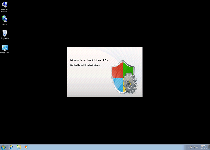
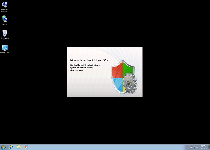
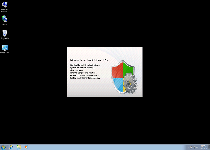
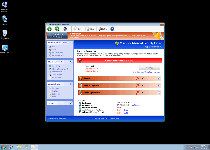
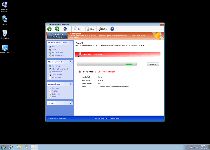
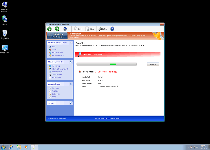
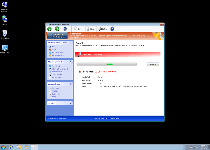
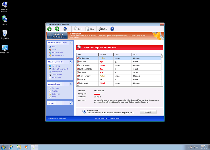
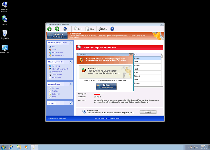
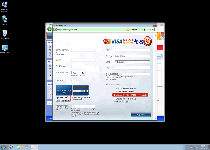
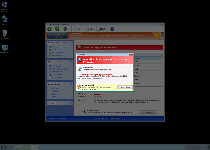
Leave a Reply
Please note that we are not able to assist with billing and support issues regarding SpyHunter or other products. If you're having issues with SpyHunter, please get in touch with SpyHunter customer support through your SpyHunter . If you have SpyHunter billing questions, we recommend you check the Billing FAQ. For general suggestions or feedback, contact us.